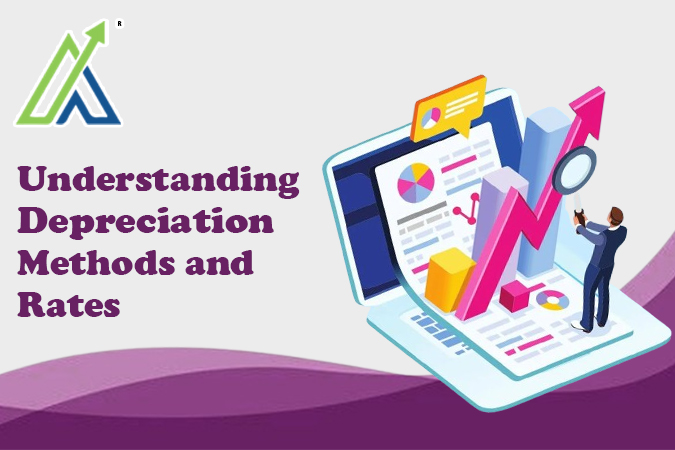Accounting uses a technique called depreciation to systematically spread the cost incurred on physical assets over the useful life of the assets. There are various methods for calculating depreciation, each best suited for different types of assets and the needs of a business. The Written Down Value Method, the Annuity Method, the Sinking Fund Method, and the Straight-Line Method are widely used methods in India. This blog will cover these techniques and their relative costs, providing examples of how they are applied in practice.
Straight Line Method (SLM)
The Straight-Line Method is the simplest and most straightforward way to calculate depreciation. Under this method, an equal amount of depreciation is charged each year over the useful life of the asset. For example, if a company purchases machinery for ₹1,00,000 with an expected useful life of 10 years, the annual depreciation would be ₹10,000. This method is particularly suited for assets like office buildings and equipment, which have a consistent utility over time.
Written Down Value Method (WDV)
The Written Down Value Method, also known as the diminishing balance method, calculates depreciation as a fixed percentage of the book value of the asset each year. For instance, if a business acquires a vehicle for ₹1,00,000 and uses a depreciation rate of 15%, the depreciation expense for the first year would be ₹15,000, reducing the book value to ₹85,000. The next year’s depreciation would then be 15% of ₹85,000, amounting to ₹12,750. This method is suitable for assets that depreciate more rapidly in the initial years, such as computers and vehicles.
Annuity Method
The Annuity Method considers the cost of the asset and the interest lost on the investment. It calculates depreciation by treating the asset as an investment, generating returns at a fixed rate of interest. For example, if a company invests ₹1,00,000 in equipment with a useful life of 5 years and assumes an interest rate of 10%, the annual depreciation expense can be derived from annuity tables, resulting in approximately ₹26,379 per year. This method is ideal for long-term investments where the opportunity cost of capital is significant.
Sinking Fund Method
The Sinking Fund Method sets aside a fixed amount of money annually into a sinking fund, which earns interest. At the end of the asset’s useful life, the accumulated amount in the fund will equal the asset’s cost. For example, if a company needs to replace machinery costing ₹1,00,000 after 10 years, it might deposit ₹8,000 annually into a sinking fund assuming a 5% interest rate. Over 10 years, the fund grows to match the replacement cost, ensuring the business can afford a new asset without financial strain. This method is particularly useful for assets requiring significant capital replacement, such as heavy machinery.
Depreciation Rates in India
In India, depreciation rates are often prescribed by the Income Tax Act, depending on the asset category. Here are some common rates:
Buildings: 10% per annum for residential buildings and 5% for non-residential buildings.
Furniture and Fittings: 10% per annum.
Plant and Machinery: 15% per annum.
Computers: 40% per annum, reflecting rapid technological obsolescence.
Questions to Understand your ability
Ques1: What’s the yearly depreciation using the Straight-Line Method for machinery costing ₹1,00,000 over 10 years?
₹5,000
- ₹10,000
- ₹15,000
- ₹20,000
Ques2: Which method takes a fixed percentage of the asset’s book value each year for depreciation?
- Straight Line Method
- Written Down Value Method
- Annuity Method
- Sinking Fund Method
Ques3: If a vehicle worth ₹1,00,000 is depreciated at 15% annually using the Written Down Value Method, what’s the depreciation in the second year?
- ₹10,000
- ₹12,750
- ₹15,000
- ₹18,750
Ques4:Which depreciation method involves putting aside a fixed amount each year into a fund with interest?
- Straight Line Method
- Written Down Value Method
- Annuity Method
- Sinking Fund Method
Ques5: What’s the depreciation rate for computers according to the Indian Income Tax Act?
- 10%
- 15%
- 25%
- 40%
Conclusion
Proper methods and rates of depreciation, therefore, assume importance for correct financial reporting and tax planning. While choosing the process to be followed, businesses should consider the nature of the assets and unique requirements. Such variants are necessary simply so that with proper decision-making, Indian accounting standards can be complied with and financial performance optimized. Depreciation management is thus essential for any company to reflect the actual condition of its assets far more credibly for proper financial health.
FAQ's
It’s easy to use year after year because it’s simple and always the same.
These assets lose value quickly at first, and this method accounts for that rapid depreciation.
It treats the asset like an investment, calculating depreciation based on the cost and lost interest.
It’s a fund where you set aside money every year, earning interest, so you have enough to replace the asset when its life ends.
Rates are fixed by the type of asset, like 10% for residential buildings and 40% for computers.
It drops a lot in the first few years and less so each year after that.
It ensures you save enough money to replace the machine without stressing about a huge cost all at once.
It helps show the real value of assets, aids in financial planning, and keeps you compliant with accounting rules.

